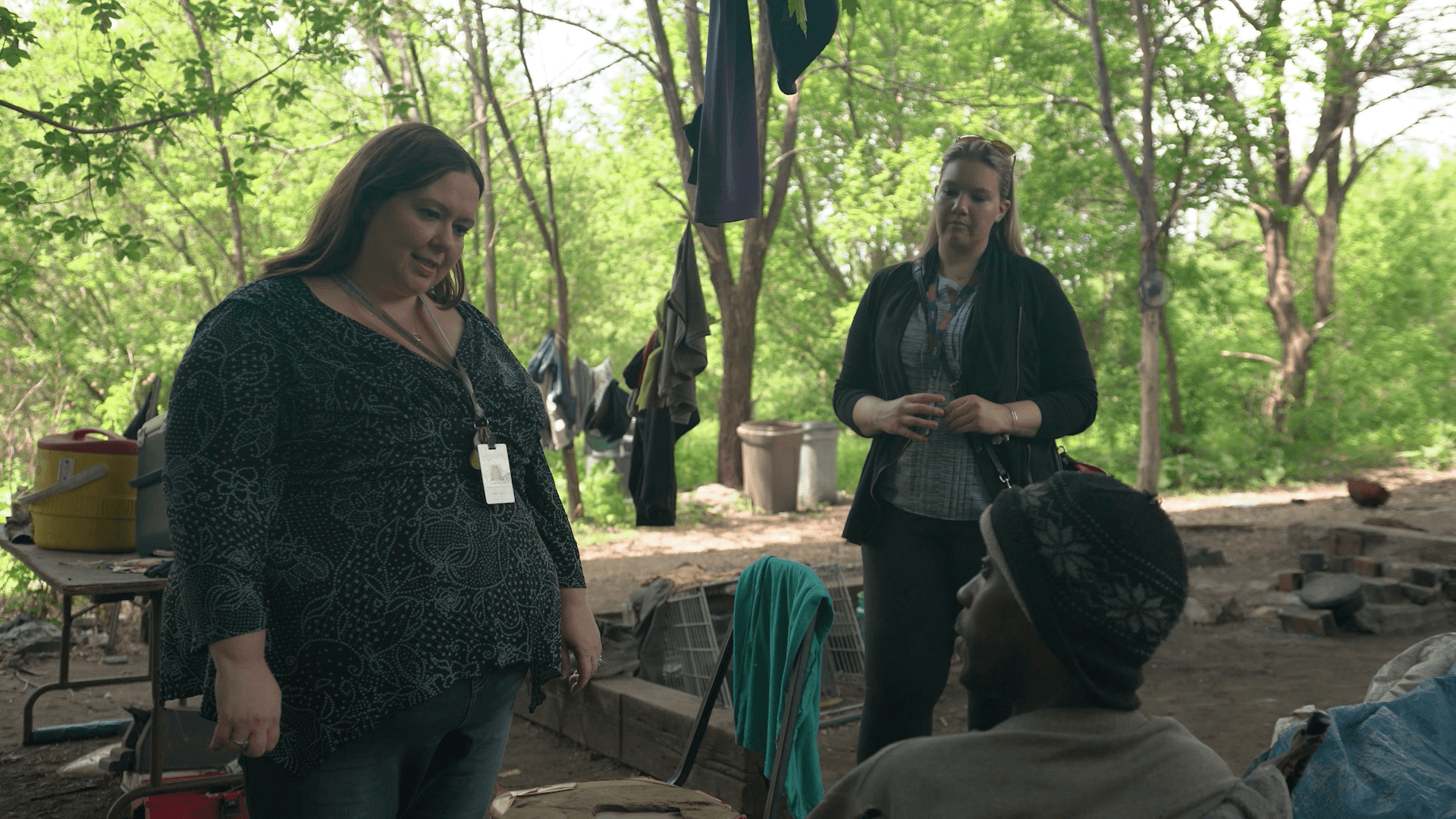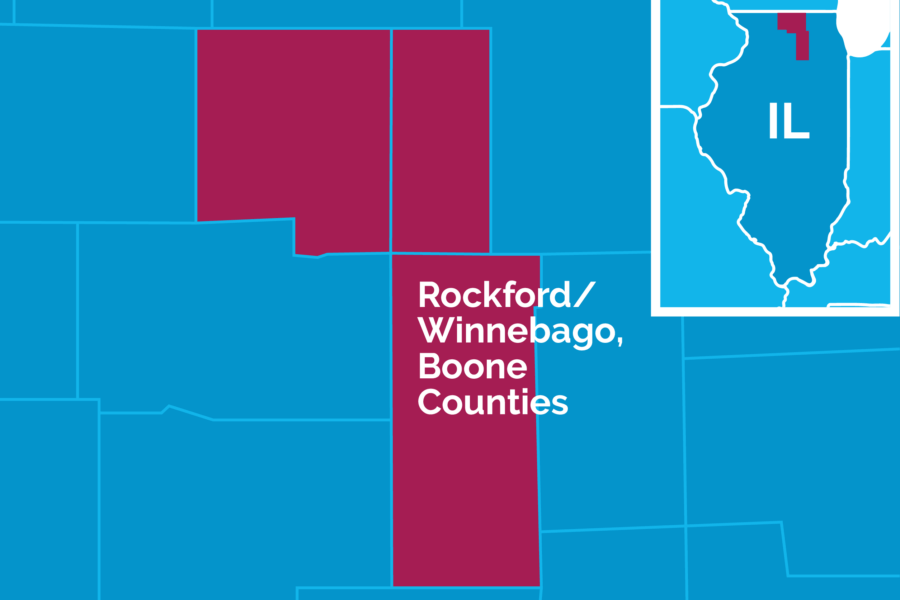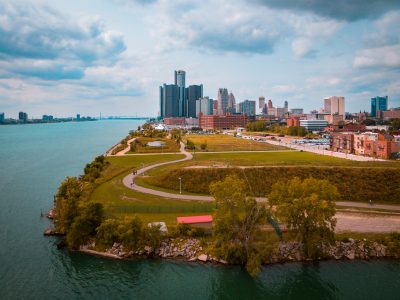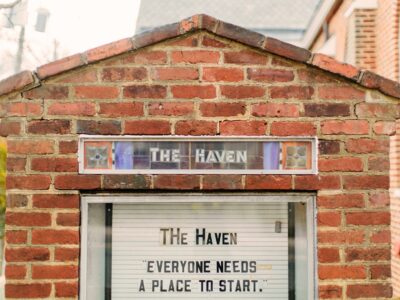COVERAGE AREA
Cities: Rockford, Belvidere, and several small towns
Counties: Winnebago & Boone Counties
Total Population: Over 350,000
The Achievement
FUNCTIONAL ZERO FOR VETERAN AND CHRONIC HOMELESSNESS
- Milestones Reached: Veteran (2015) and Chronic (2017)
- Next Population for Focus: Youth, families, and all single adults
Rockford, Illinois, a city ninety miles north of Chicago, is just one of three communities in the U.S. to reach functional zero for both veteran and chronic homelessness. It is a part of Built for Zero, a movement of more than more than 105 communities committed to measurably ending homelessness, one population at a time. The Continuum of Care for Rockford/Winnebago, Boone Counties joined Built for Zero in 2015
In January of 2017, Rockford became the first community in the United States to end both chronic and veteran homelessness.
This journey began in December 2015, when Rockford reached functional zero for veteran homelessness, demonstrating that there are fewer veterans experiencing homelessness than can be routinely housed within a month, which is eight veterans in Rockford. By reaching functional zero for veteran homelessness, the community has proven it has built a system that can ensure homelessness is rare and brief, even if new veterans experience housing crises over time.
Chronic homelessness describes people who have experienced homelessness for at least a year— or repeatedly— while struggling with a disabling condition such as a serious mental illness, substance use disorder, or physical disability.
A community has ended chronic homelessness when three or fewer people are experiencing chronic homelessness (or 0.1% of the community’s most recent total homelessness individual point-in-time count, whichever is greater). This definition is shared between Built for Zero and the federal government.
How did they do it?
As part of Built for Zero, Rockford changed how its homeless response system works by adopting the core elements of the Built for Zero methodology:
- Using real-time, person-specific data to know every person experiencing chronic homelessness or veteran experiencing homelessness by name and target efforts and resources accordingly
- Building a unified regional team, or a “command center,” around a shared aim of getting to functional zero
- Using data to redesign Rockford’s homeless response and strategically target resources
UNDERSTANDING THE PROBLEM THROUGH QUALITY REAL-TIME DATA
You cannot solve a problem that you don’t understand. In order to measurably end homelessness, communities need real-time, person-specific data. Traditionally, an understanding of the issue of homelessness in a community has been limited to an annual estimate of people experiencing homelessness, called the point-in-time count. This is an aggregate number that provides an estimate of people experiencing homelessness on a single night, but does not include the names or needs of the people who make up that number.
Communities in Built for Zero develop by-name data, which provide real-time insights into everyone experiencing homelessness by name. Rockford maintains real-time data of every person experiencing homelessness, including veterans, people who are chronically homeless, young adults, singles, and families. Each homeless individual who comes into contact with city services is added to the appropriate list and prioritized based on an assessment. This enables communities to triage that individual’s needs, understand if their investments and activities are driving homelessness down and test and innovate ideas that will move people out of homelessness faster.
“We were doing something we’ve never done before, which was literally talking about veterans one at a time with the people working with them, with an entire focus on getting them housed permanently as quickly as possible,” said Jennifer Jaeger, Rockford’s community services director. “At the same time, we were taking that data and publishing it monthly, leading to more community accountability. That community accountability led to more community involvement and buy-in.”
The team created a system that ensured quality data on every veteran experiencing homelessness in 2015 and every person experiencing chronic homelessness by May 2016. This data enabled them to understand who was moving out of homelessness, who was entering into it, and who was remaining on the list.
BUILDING A COMMAND CENTER

The local Built for Zero team continued by unifying the efforts of key agencies working locally to end homelessness.
In many communities, local agencies or nonprofits focus on their piece of the solution, without an ability to see how all the pieces in their community fit together. Often, success is defined by each organization’s programmatic goals rather than whether the overall number of people experiencing homelessness is going down.
Rockford reorganized their efforts around a shared goal of getting to zero on veteran and then chronic homelessness by creating a multi-agency “command center” working off the real-time, by-name data of everyone experiencing homelessness. Those on the by-name list with the highest need are referred to the next available permanent housing opportunity they’re eligible for — a mix of supportive, subsidized, and market-rate housing.
“For veteran homelessness, if anyone dealt with veterans we invited them to the table,” said Angie Walker.
The team enacted a strategy based on a collective impact model, assigning each by-name list a collective impact team composed of all agencies that would naturally interact with the population and have the resources to serve them. For each population, that collective impact team would meet weekly to “work the list” or employ “case conferencing” — discussing and sharing information on each person on the list. They would then develop a housing plan and outreach strategy if necessary.
By using this method, the entire team becomes responsible for ensuring the people on the list are permanently housed, while also making sure the outreach team has contacted all members of the targeted homeless population. “It was really about focusing and crystallizing our efforts on the population — pulling everybody to the table and holding everybody accountable,” Jaeger said.
Another important factor in Rockford’s success was having engaged mayors. After Walker encouraged Mayor Larry Morrissey to sign on to the Challenge to End Veteran Homelessness launched by the Obama administration, Morissey publicly committed to the goal of ending veteran homelessness. Throughout his time in office, he continued to push the community to set targets and measure progress each week. Since January 2017, his successor, Mayor Tom McNamara, has continued to support these efforts, asking for and reviewing monthly updates to sustain these ends.
USING DATA TO DESIGN A SYSTEM THAT REDUCES AND PREVENTS HOMELESSNESS

With real-time, by-name data in hand, the Rockford team was able to address factors contributing to homelessness, lower barriers to housing, and improve their coordinated entry system, a process that serves any and all homeless populations.
They have used a combination of a homeless hotline, a single point of physical entry, and street outreach entry to provide assessment and enrollment into coordinated intake. Each entry point handles assessment, data entry, referrals, and placement, and the system is community-wide, meaning every agency that provides any type of housing for the homeless participates.
Together, the team has been able to move people into housing quickly, convincing individuals that the team is serious about finding housing for them. Assessment staff can provide necessary prevention or diversion services or refer someone to the program that is best equipped to get them into permanent housing as quickly as possible taking into consideration client choice. As part of this system, the team began providing temporary bridge housing for veterans while permanent housing was being secured. They tapped into a variety of resources, some of which include emergency shelters, grant per diem providers, and transitional housing.
“We’ve made a lot of effort to try to see what approach is right for the different groups, and then we implemented it and moved forward,” said Walker. “We’ve been really good about not getting stuck in one certain way of doing things.”
They also adopted an approach based on Housing First, prioritizing providing permanent housing to people experiencing homelessness, guided by the belief that people need basic necessities like food and a place to live before attending to anything less critical, such as getting a job, budgeting properly, or attending to substance use issues.
By tracking inflow, outflow, who’s housed, and who’s returned to homelessness, the Rockford team realized that evictions were a major driver of homelessness in their community. The team strengthened the city’s Eviction Prevention Program and spearheaded a one-month landlord mitigation pilot, which decreased the inflow of families into homelessness.
“Every time I talk to the Rockford team, there’s something new they’re trying,” said Julia Parshall, an Improvement Advisor on the Built for Zero team who works closely with Rockford. “They understand that homelessness is a complex problem, and they are constantly learning what works and adapting.”
What’s Next
PROTECTING ZERO AND ENDING HOMELESSNESS FOR ALL
Rockford’s goal is to continue sustaining an end to veteran and chronic homelessness while working toward ending all homelessness.
This effort to bring youth homelessness to functional zero revealed completely different data and associated challenges.
“Many young people go between homelesness and between friends and family, so often that it’s hard to keep track,” explained Walker. The challenges prompted the Human Services Department to hire a youth case manager who often conducts outreach by texting and Facebook messenger.
Outreach showed that most young people were overwhelmed by the city’s housing market. So the team hired a housing navigator to call landlords and take young people to look at apartments.
“Every population is slightly different,” Walker said. “But one of the main things about this work is just believing that it’s possible.”
Read more about Rockford’s progress.
Timeline
2015
- January: Rockford joins the Built for Zero Collaborative
- October: Reached quality data on veteran homelessness
- December: Ended veteran homelessness
2016
- May: Reached quality data on chronic homelessness
2017
- January: Rockford ended chronic homelessness
Who was on the team?
Community and Data Lead:
Angie Walker
Homeless Program Coordinator
City of Rockford
Built for Zero Team Lead
CoC Street Outreach Lead
Jennifer Jaeger
Community Services Director
City of Rockford
Built for Zero Data Lead
The Team:
Todd Kisner
Winnebago County Health Dept.
Coc Chair
Laura Snyder
RHA Lead
Alan Zais
WCHA Lead
Sonia Castaneda
VA Representative
Tom McNamara
City of Rockford
Mayor
Joyce Williams
ICA
HMIS Lead
Angela Wood-Zuzevich
TLS Veterans
Mike Hedrick
Rockford Rescue Mission
CoC Board Consumer Representative
Built for Zero Coach:
Julia Parshall
Improvement Advisor for Built for Zero






